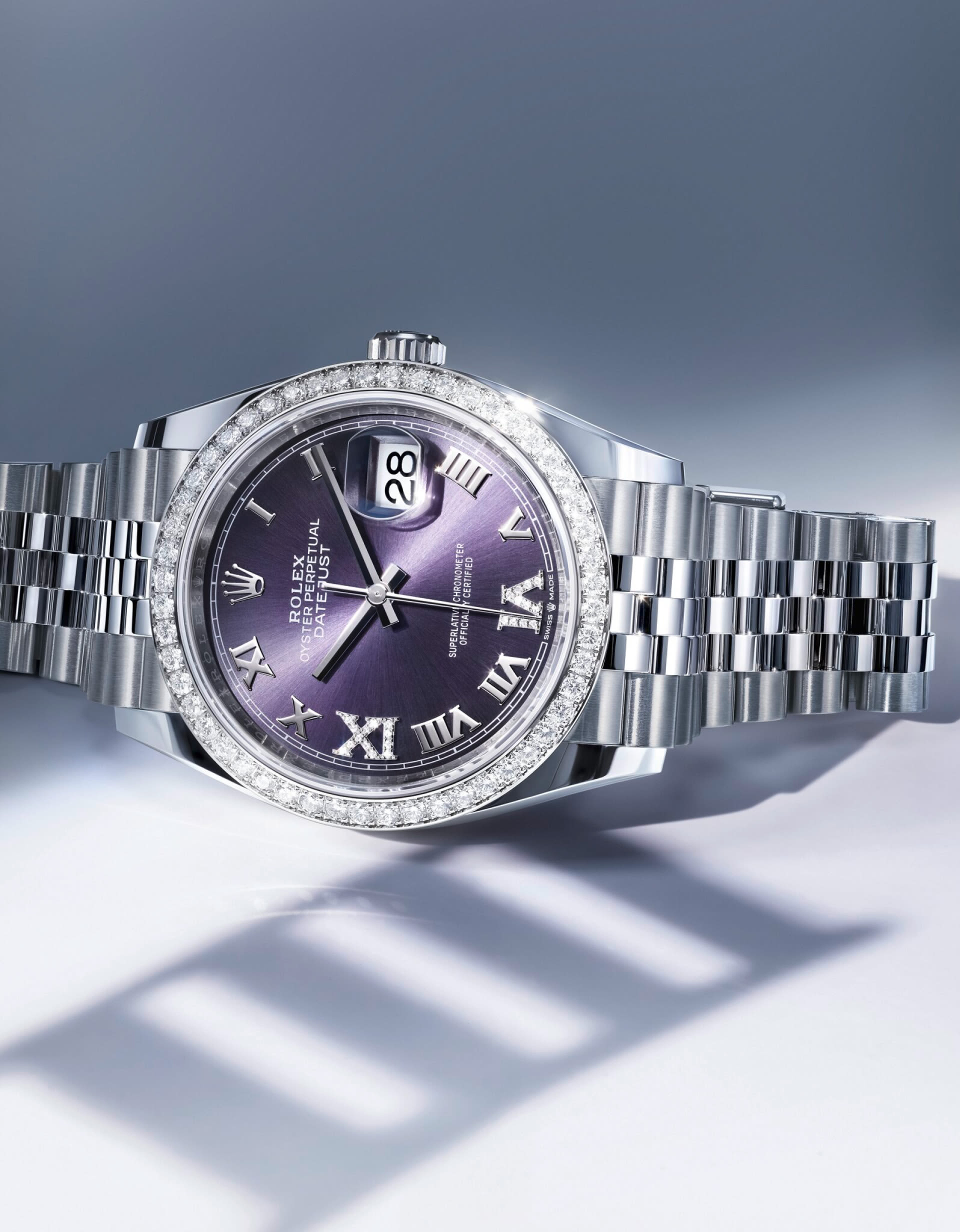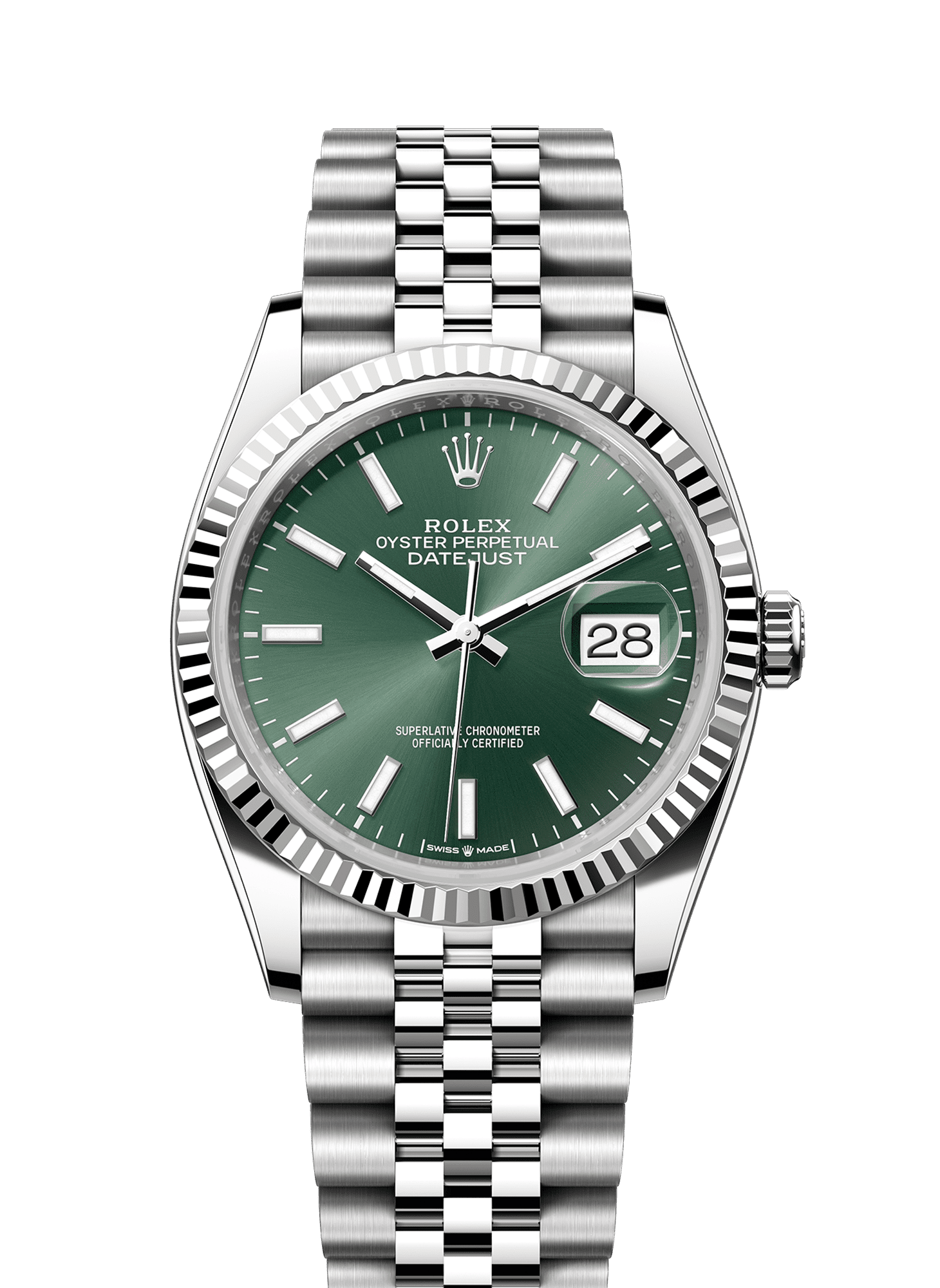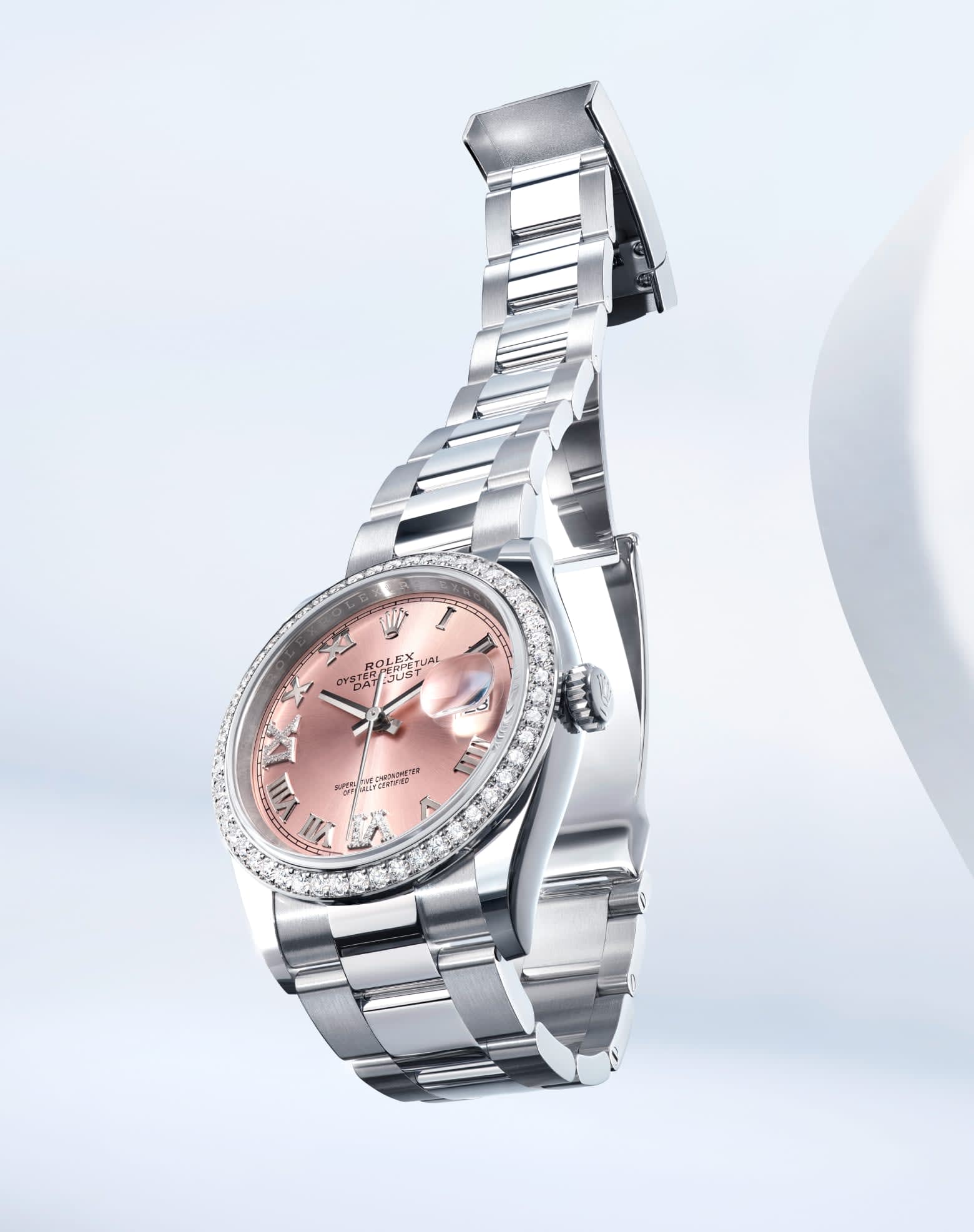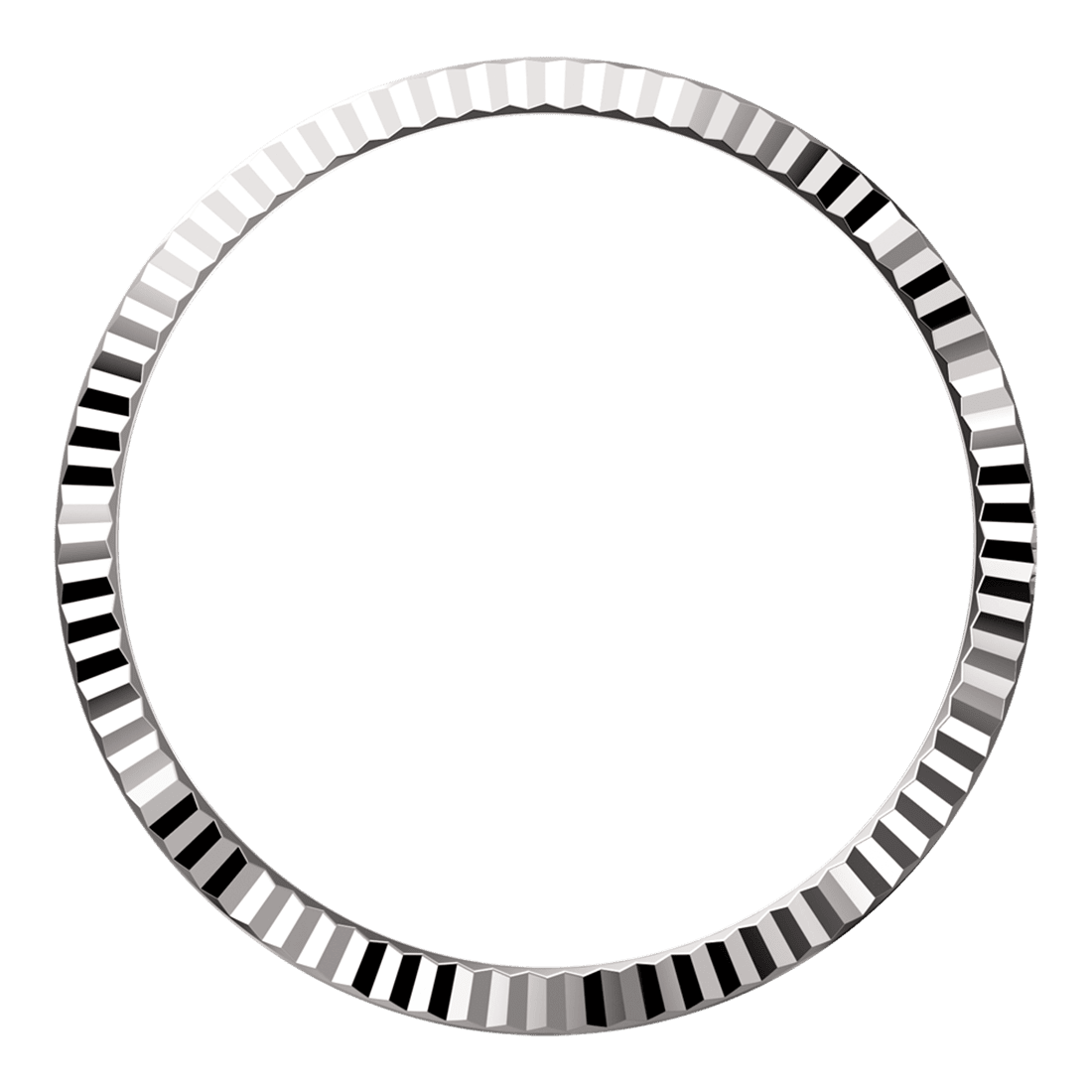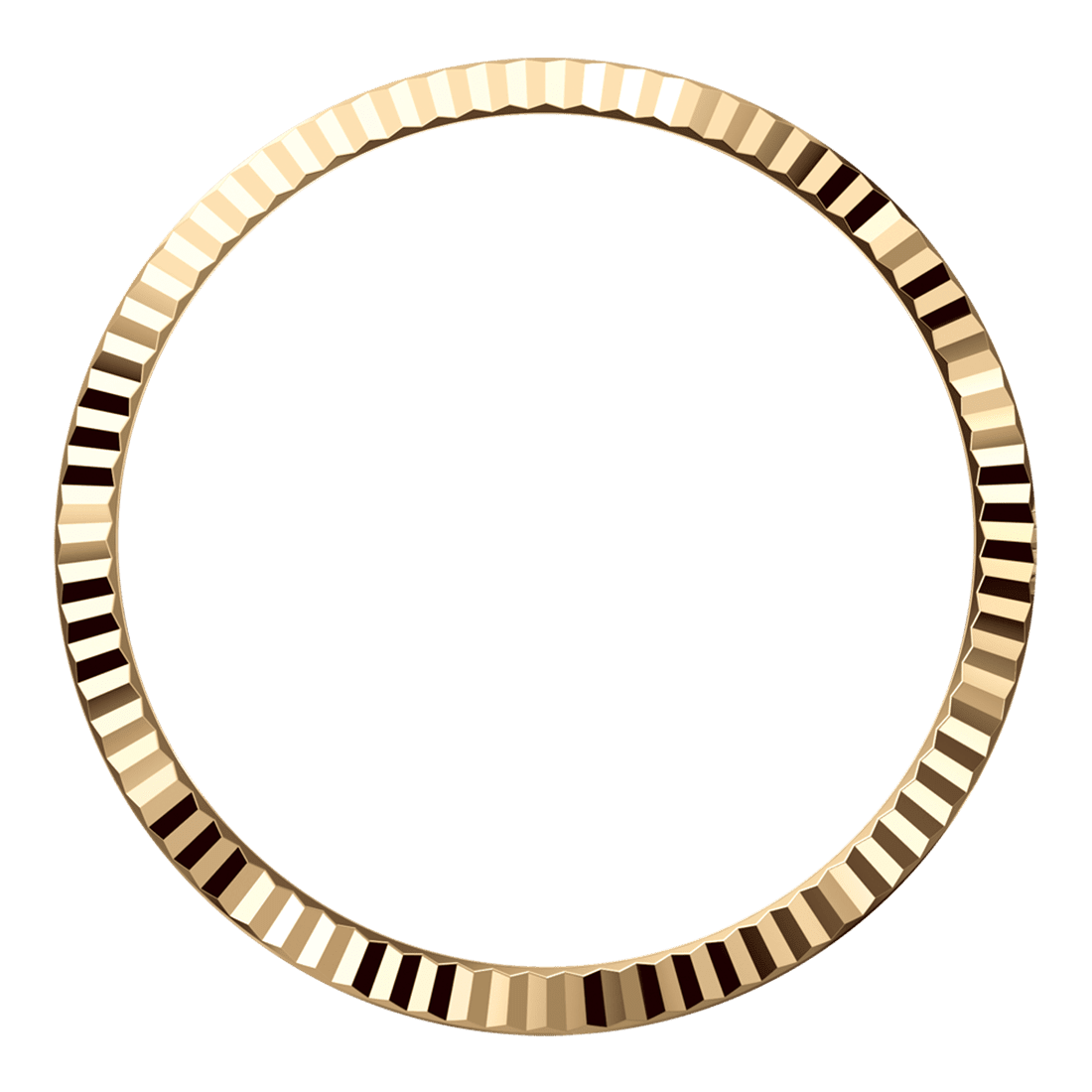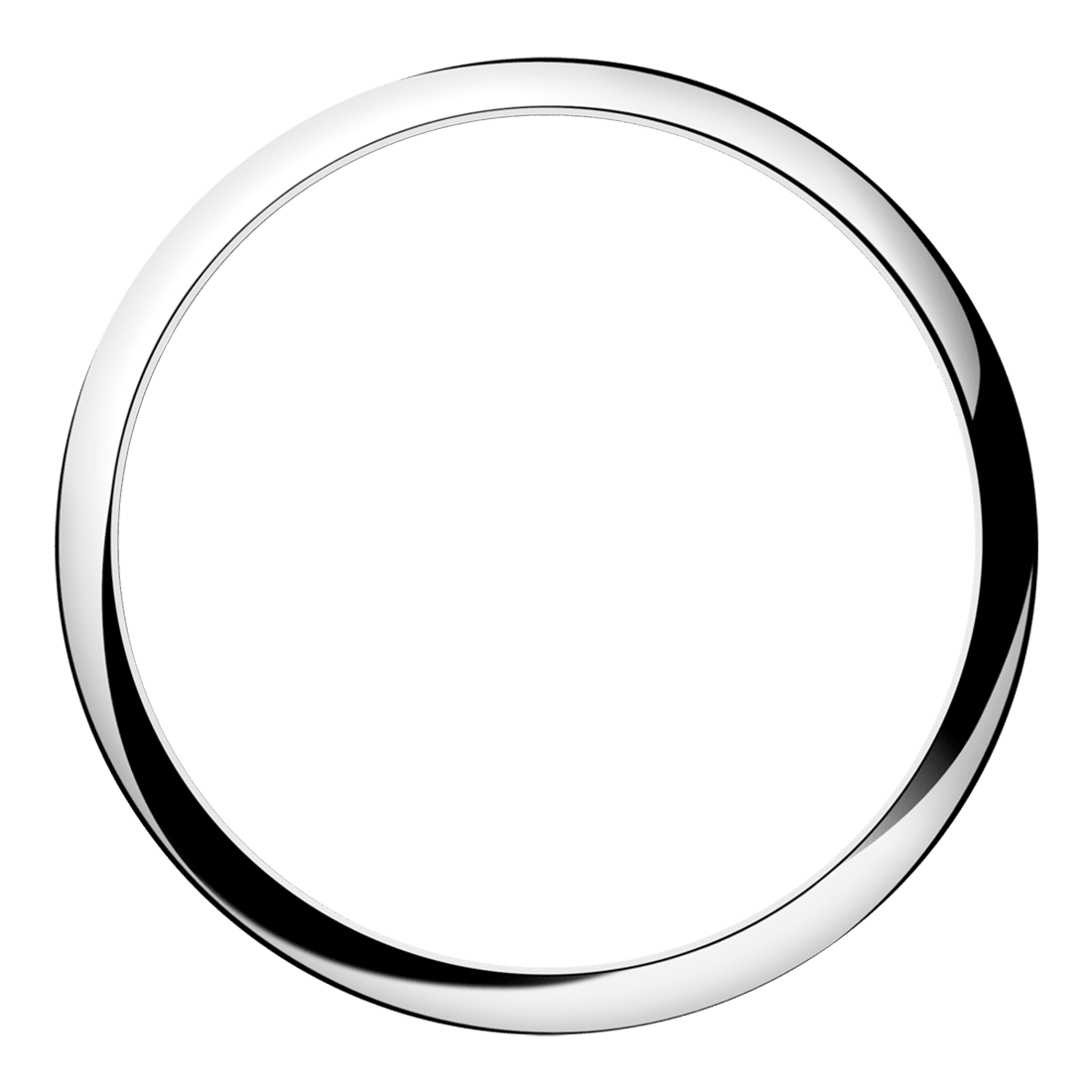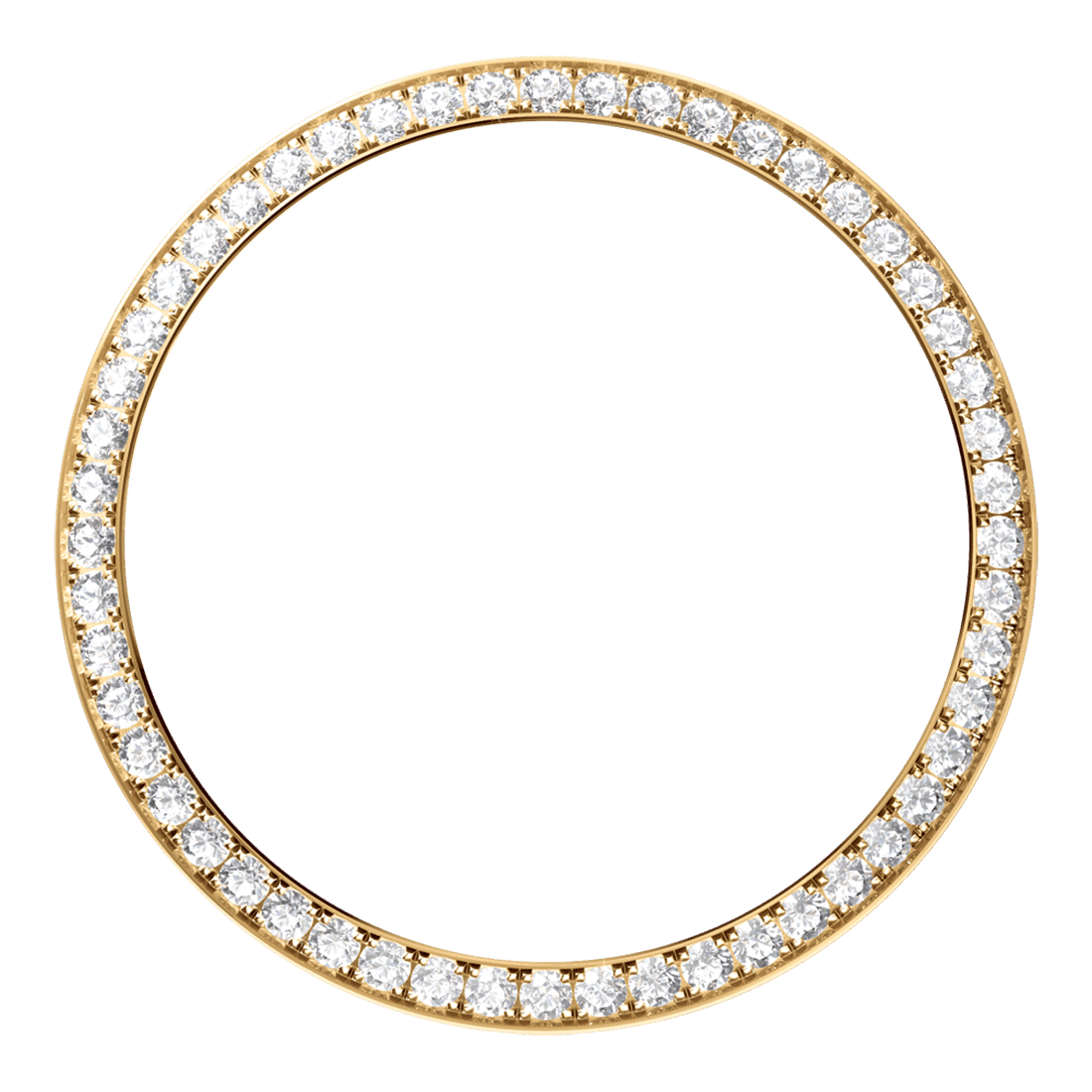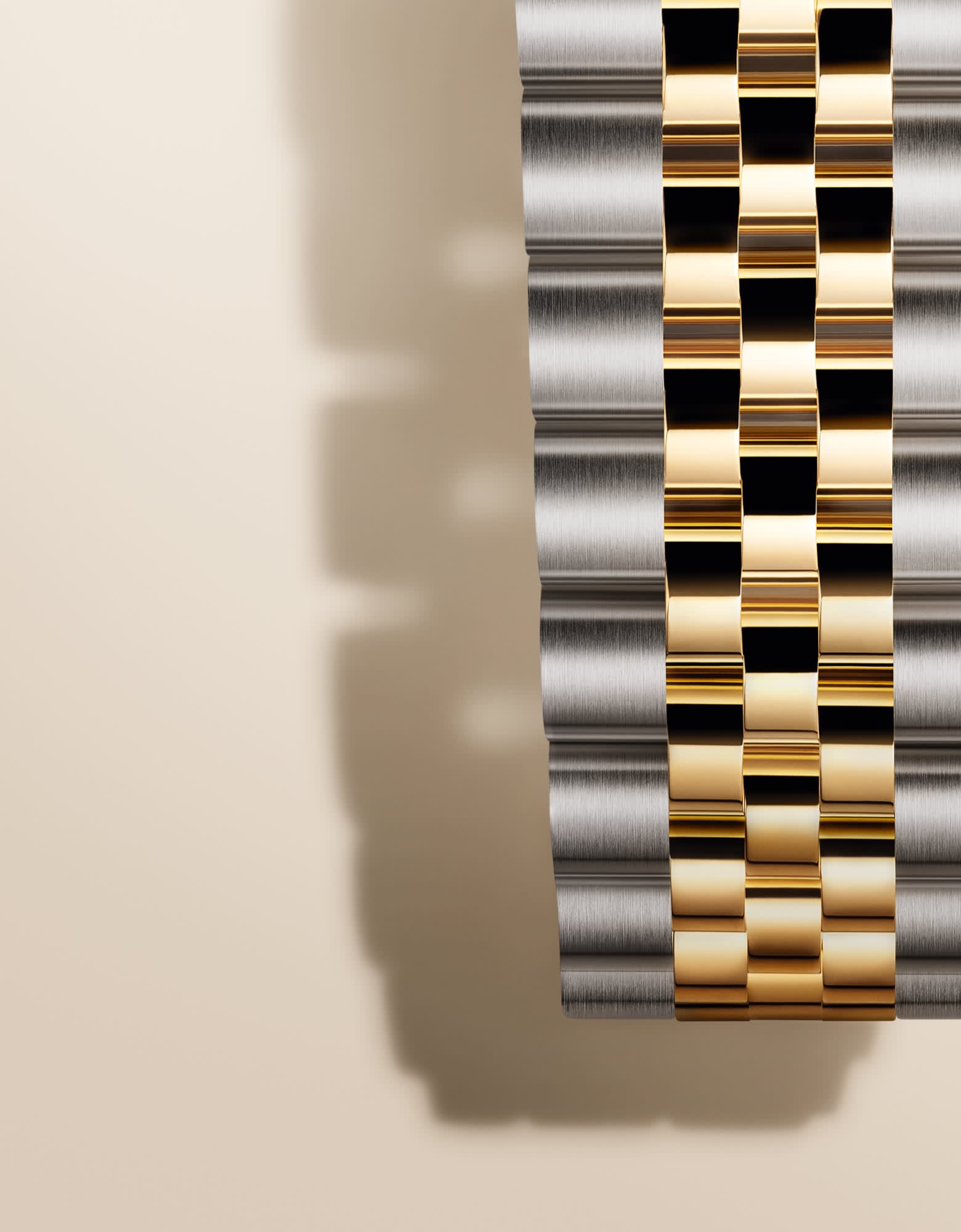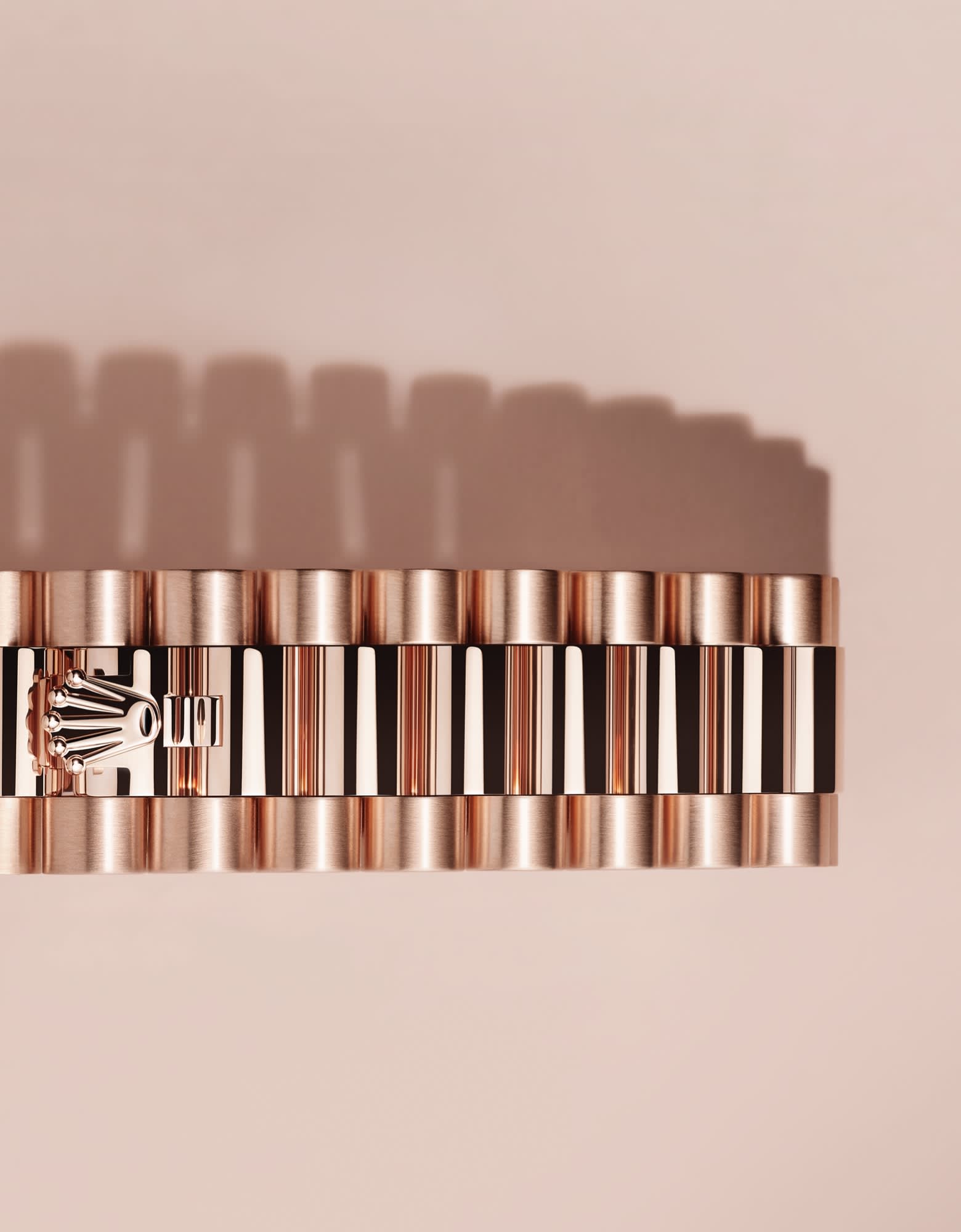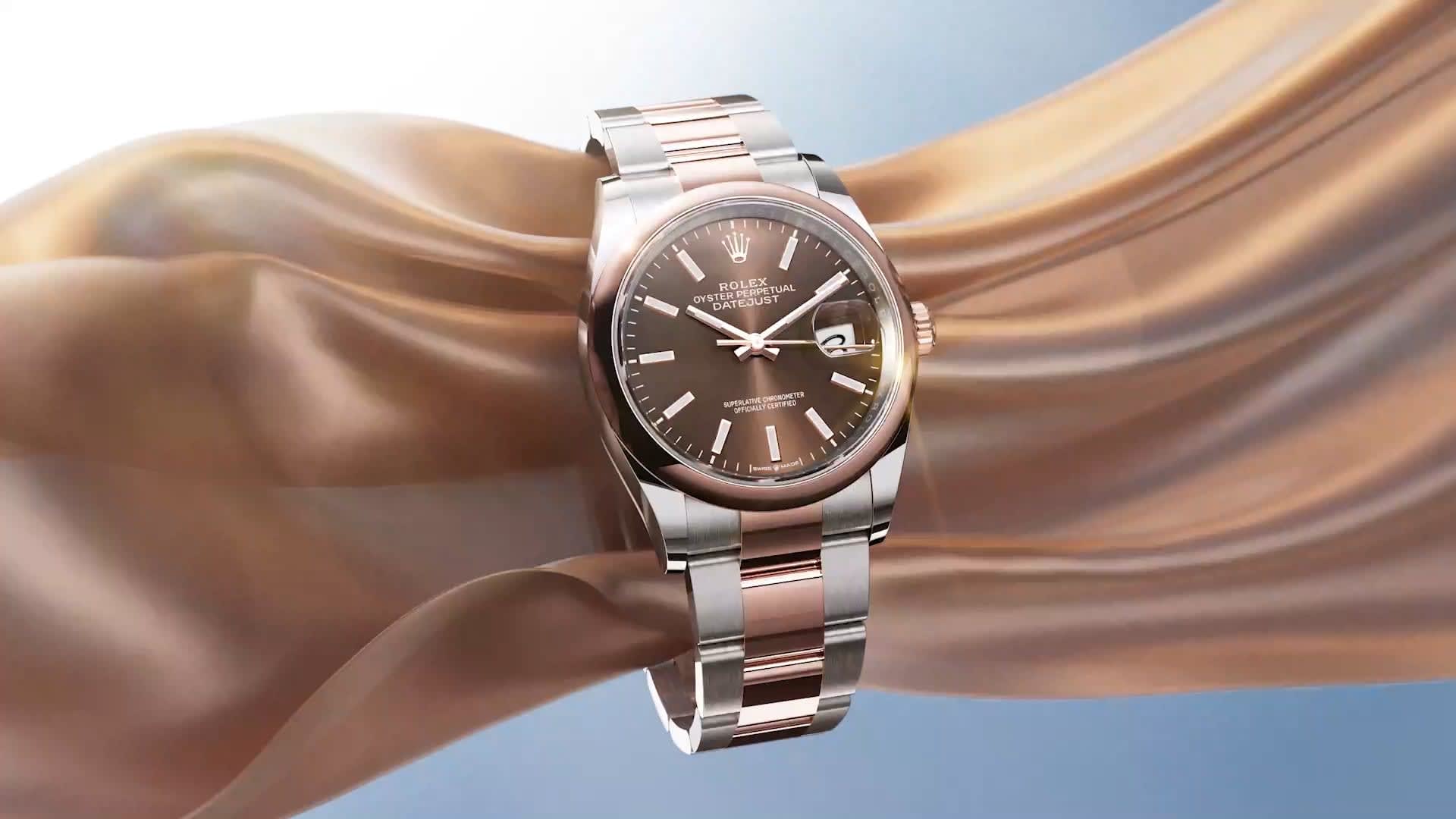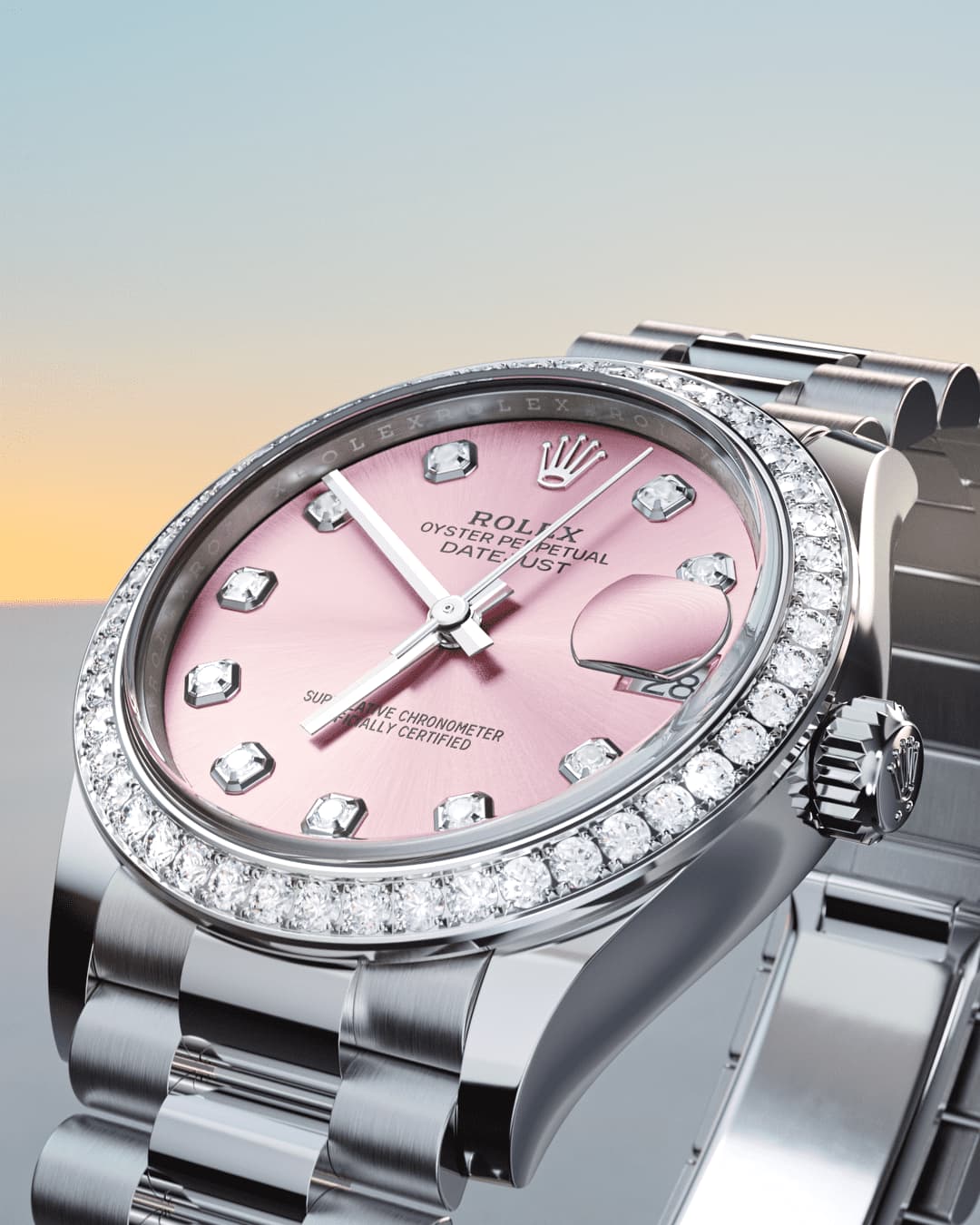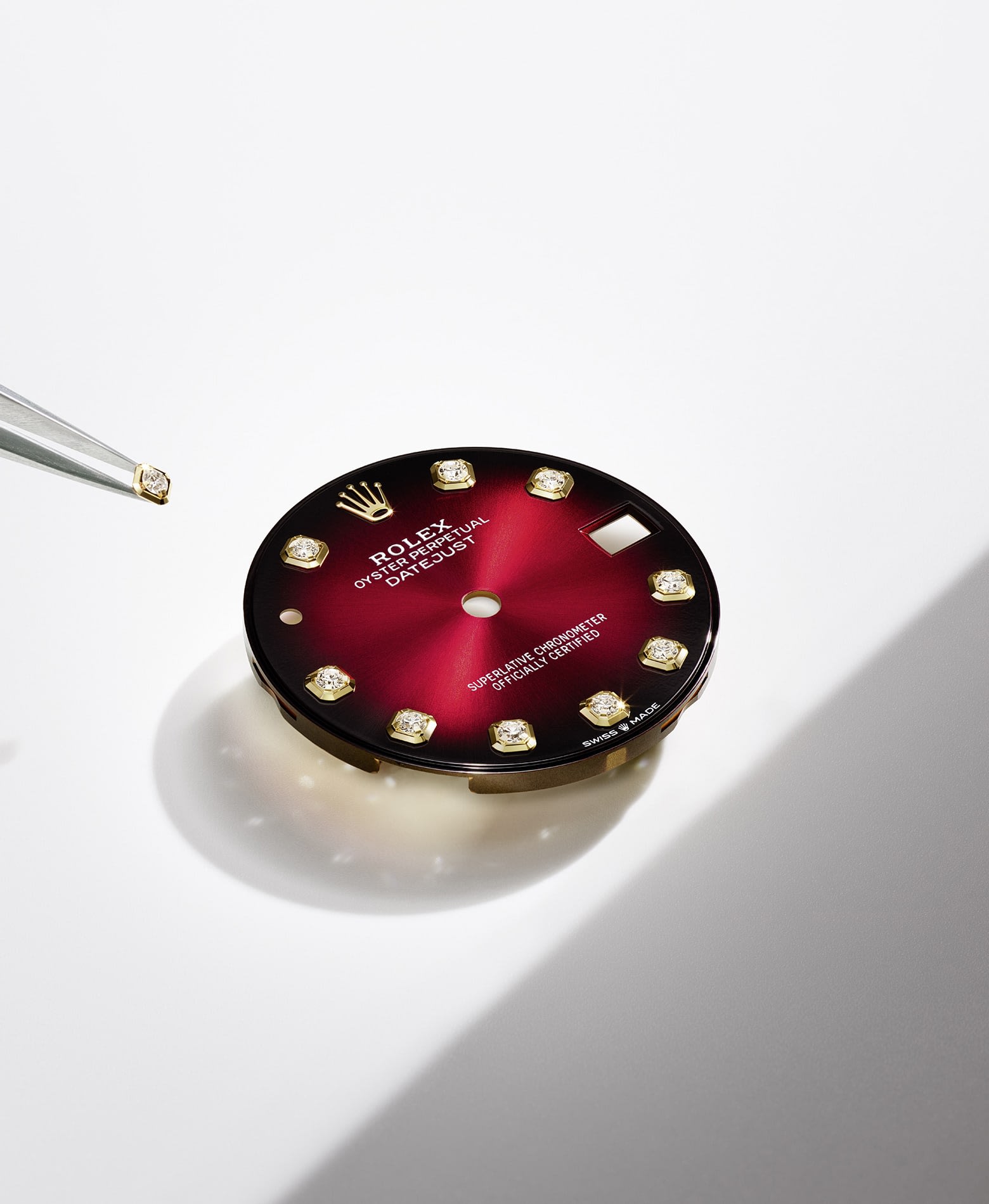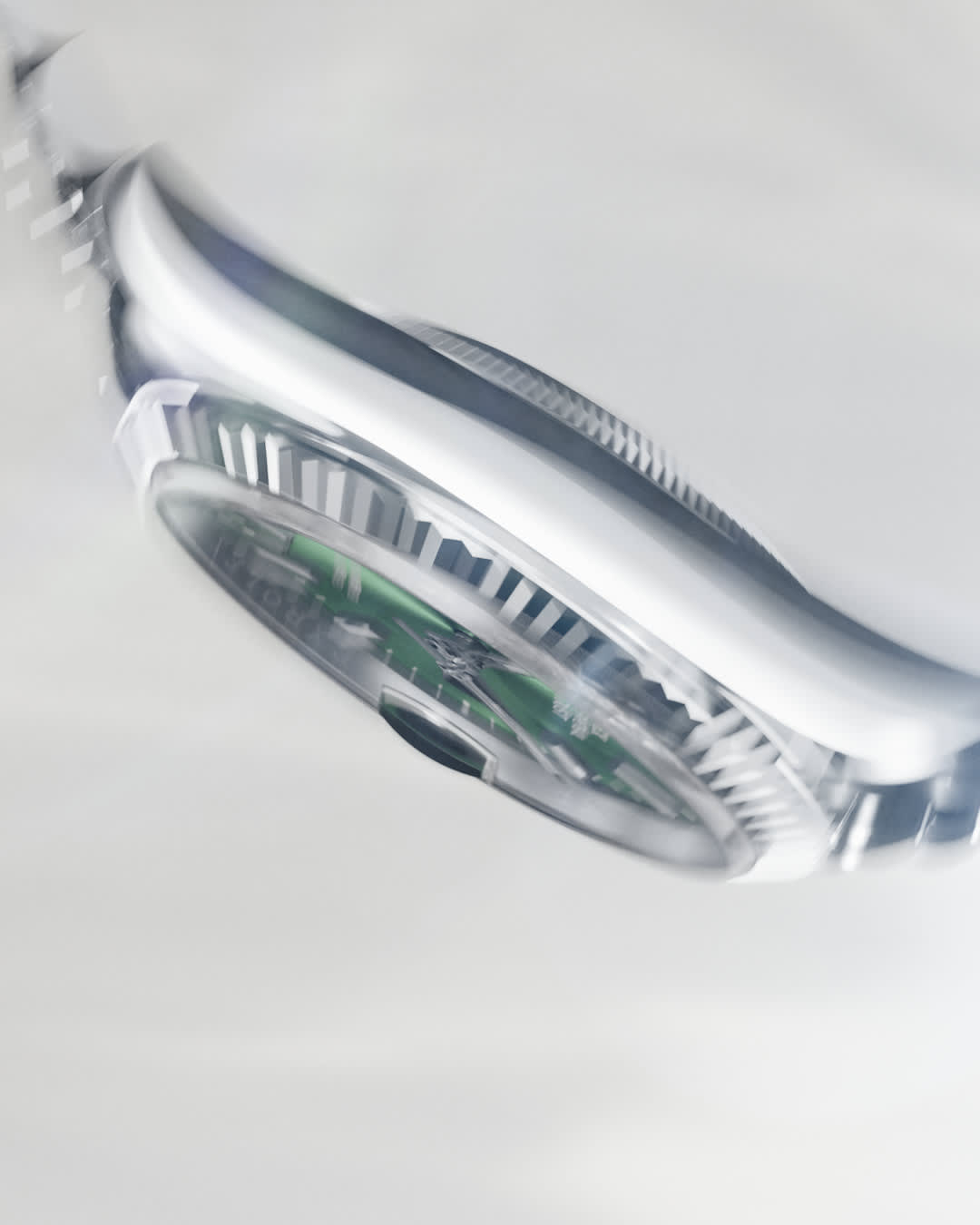The dials
Infinite faces
With a wide range of dials, the Datejust offers the most varied combinations of all Rolex watches. Set with diamonds or mother of pearl, or adorned with a sunray finish, the Datejust dials offer a host of faces available in a wide variety of materials, colours and motifs, with different hour markers (index or Roman or Arabic numerals) and multiple gem-setting possibilities. Bearing chief responsibility for the identity and legibility of Rolex watches, all of the dials are developed internally for optimal results.
